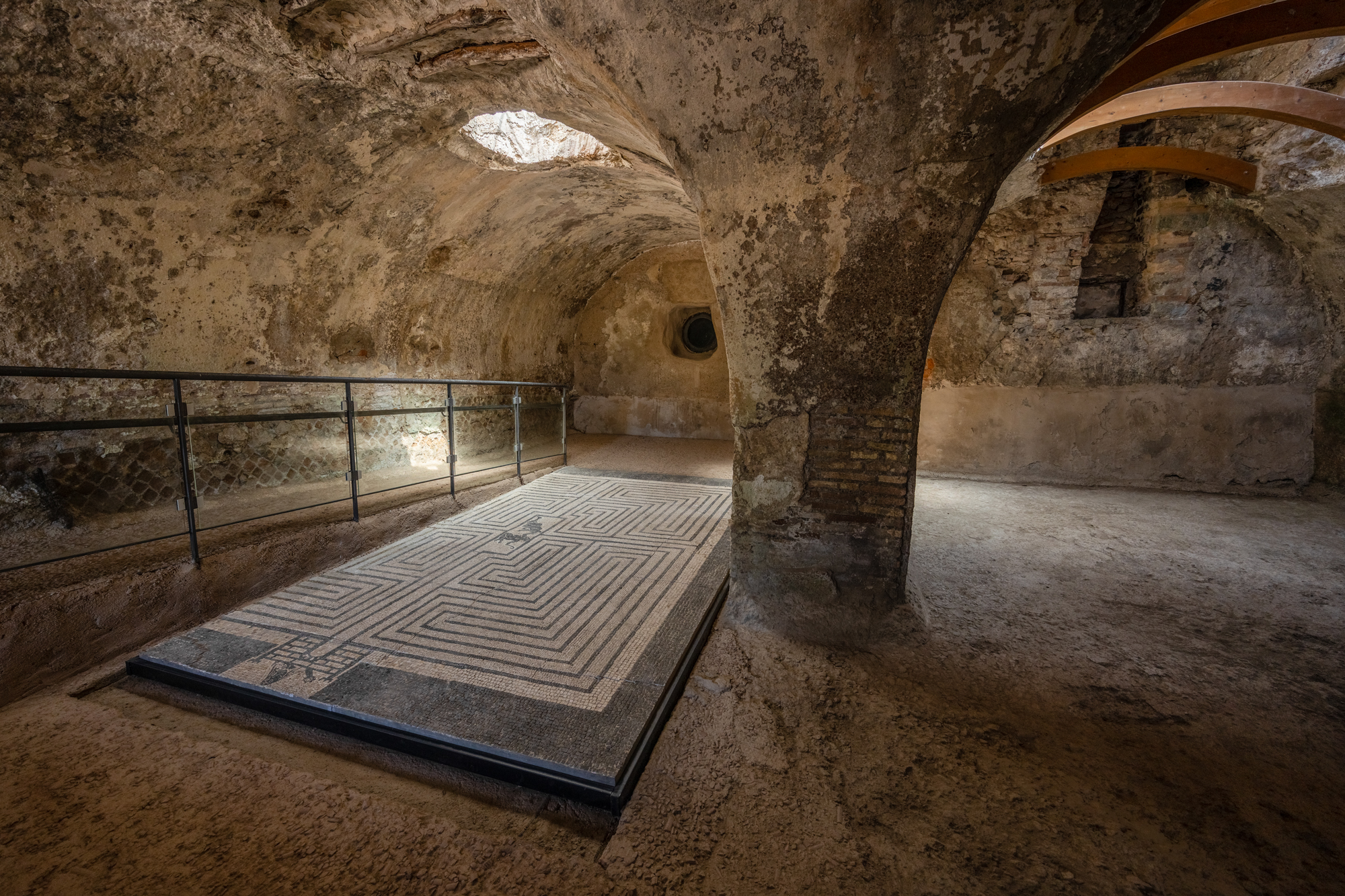Three decades later, Labyrinth Mosaic returns to Giannutri

The mosaic was uncovered between 1928 and 1934 in excavations of the 1st century A.D. villa of the Domitii Ahenobarbi family, a prestigious plebian family with a long line of consuls going back at least to the early 2nd century B.C. who married into the Julio-Claudian dynasty. The emperor Nero was born Lucius Domitius Ahenobarbus, the son of Gnaeus Domitius Ahenobarbus and Agrippina the Younger, great-granddaughter of the emperor Augustus. In the late Republic and early Empire, when the Ahenobarbi were at their peak of wealth and influence, they had no fewer than three pleasure palaces on islands in the Tuscan Archipelago, each with their own ports for the family’s sailing ships. One of the luxurious seaside villas on the island of Giannutri. It was a vast complex with utilitarian structures (cisterns, latrines) and elegant residential ones (peristyle gardens, reception rooms, baths). The rooms were large and its decorative marbles and mosaics of the finest quality.


In 2022, the Archaeological Superintendency of Tuscany began to plan the return of the mosaic to its place of origin on Giannutri. First it was subjected to a new cleaning and conservation. There was some limited damage (shifting of tiles), but the adhesion to the panels was still strong; there were no cracks, no accumulated salts. The mosaic was consolidated and a new support structure installed to anchor the mosaic panels.
The mosaic was transported to Giannutri this summer where it was installed in the cryptoporticus area, not in its the original location. The cryptoporticus is completely covered, providing protection from the elements.
* This article was originally published here
Tag:









No comments:
Post a Comment